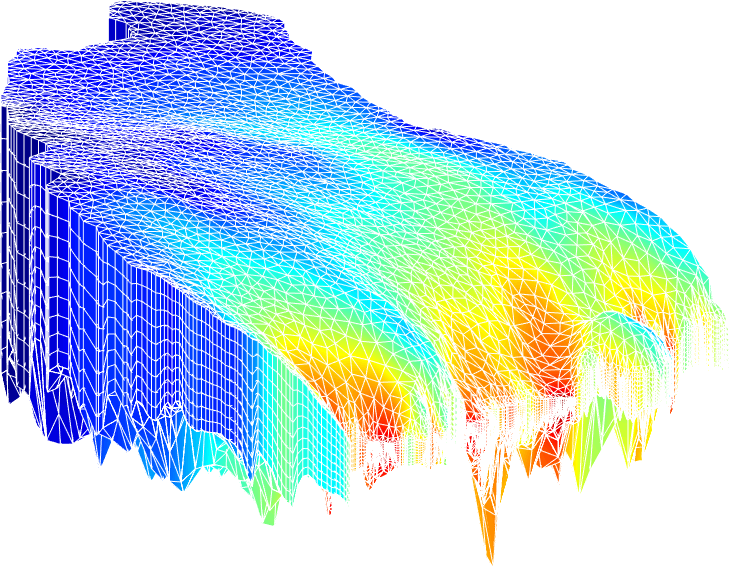Aurora model
About
This schematic is a visual representation of an ice flow model for the Aurora Subglacial Basin, East Antarctica. One of the region’s most rapidly changing glaciers, the Totten Glacier, is located in this drainage basin, fed by hundreds of thousands of gigatons of ice flowing from deep in the interior of the ice sheet. The model simulates how ice flows, so that we can investigate the sensitivity of the Totten Glacier to external changes, such as a warming atmosphere, or changes in ocean circulation and temperature. Each triangle in the grid contains information on the ice thickness, elevation, velocity, and temperature, and uses mathematical equations to predict how these physical properties will evolve in time. We can modify the size of the triangles to get more detailed information from the model in areas of interest. For example, higher resolution model results are of particular interest in the zone where the ice transitions from being grounded on bedrock to floating in the ocean, which is an important region for predicting the contribution of Aurora Subglacial Basin to future sea level rise.
Colours are ice velocity (metres/year)
Each block solves equations for: ice velocity, ice mass transport, ice temperature
The physical conditions at the interface between two connected blocks are the same (i.e., flow out of one block = sum of flow into neighbouring blocks; temperature at interface between two neighbouring blocks is the same)
The blocks are all different sizes (we call this an ‘anisotropic’ mesh), with smaller blocks in areas of faster ice flow to capture the spatial nonlinearity of ice flow (i.e. ice accelerates as it flows from the interior to the continental margins). This is important because different physics operate in different locations of the ice sheet. E.g., the fast-flowing zone where the ice transitions from being grounded on bedrock to floating in the ocean has physics that aren’t necessarily important in the slow-flowing areas in the deep interior
Biggest blocks are 20km (W) x 20km (L) x 400m (D); smallest blocks are 2km (W) x 2km (L) x 100m (D)
The block sizes are constant in time

